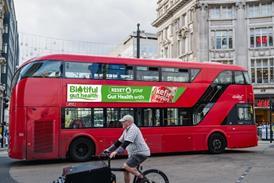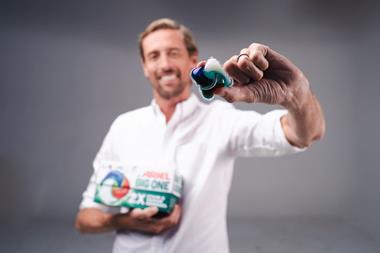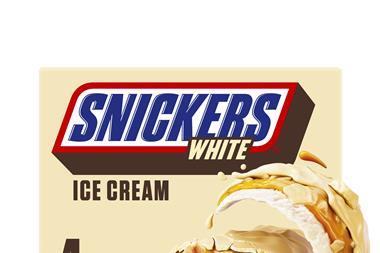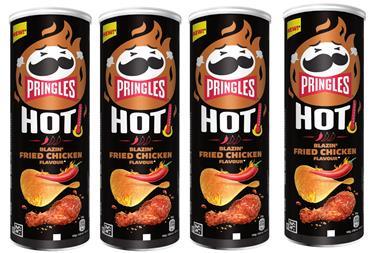As usual the summer months are flying by and all too soon it’s time for parents to make sure that uniforms are in order and bags packed ready for the new school year. One thing that parents also need to consider is what their children will drink while at school.
The children’s soft drinks market, which consists mainly of squash, juice and juice drinks, had a varied 2008 with the latter two sub-categories both seeing a 1% drop in sales compared with the previous year. Squash fared better with a 2% increase in sales over the 12-month period.
These mixed results have left manufacturers relying much more on a hot summer for 2009 and the back-to-school season to boost their figures. And with the weather so far failing to meet expectations it’s the back-to-school market that’s receiving a lot of attention at the moment.
Highland Spring marketing director Sally Stanley says that the season is one of the busiest of the year for manufacturers. “Typically, in the first week of September with back to school, sales of kids’ bottled water increase by 50%. Parents realise that children don’t always have access to quality drinking water at school so they put a bottle in the lunchbox to keep kids hydrated throughout the day.”
When it comes to children’s soft drinks, the health debate is never far away and major efforts are being made to reduce childhood obesity.
“The government and School Food Trust have long been leading the way in the fight against childhood obesity,” says Marielle de Jong, marketing director at Campina UK, which manufactures Yazoo. “One of their key initiatives is the ban on sweetened fizzy drinks. Now only bottled water, skimmed or semi-skimmed milk, pure juices and yogurt or milk drinks with less than 5% added sugar are allowed to be sold at schools.”
Last month the Food Standards Agency launched a consultation on reducing added sugar in a range of products, including soft drinks. The aim of the consultation is to introduce recommendations for manufacturers to adhere to voluntarily, as well as to encourage the industry to increase the proportion of marketing budgets allocated to healthier options.
It’s not only the government that has been taking a stance on healthy drinking parents are becoming more involved in what their children drink, too.
“Government intervention in schools’ food and drink policy and significant media coverage has kept the childhood obesity debate at the forefront of parents’ minds, and as a result they are making more educated decisions, choosing healthier drinks for their children than in the past,” says Jong.
She adds: “Parents are now increasingly checking ingredients and sugar levels to ensure that their children are benefiting from a more balanced and considered diet. This change in attitude has been emerging for some time and, as a result, manufacturers have generally been cleaning up their act, removing artificial colours and moving towards more natural ingredients.”
Jong adds that brands that have natural appeal are more likely to succeed given the increased interest in health.
According to figures from Nielsen, the ready- to-drink milkshake category grew by a healthy 6% in volume over the 12-month period up to May 2009.
Promoting a healthy drink to parents is one thing, but being attractive to children at the same time is something different entirely. If the product caters too much to parents then children may reject it, and vice versa.
“A children’s drink must have a strong, appealing brand to resonate with the kids’ audience and ideally span a wide age range in terms of appeal but needs to meet with parent approval if it is to be adopted into everyday use,” says Deborah Carter, senior consultant at marketing company Dragon Rouge.
“Some older kids are dismissive, for example, of drinks in small cartons because they seem babyish, even though they are economical and come in purse-friendly multi-packs,” adds Carter. “Brands that offer a plus in terms of fun graphics, or ‘cool’ sports caps, a plastic pouch or sports association are more likely to succeed.
“And to ensure parents approve, the important aspect for a brand is to contain a healthy message such as ‘one of your 5 a day’, no artificial flavourings or colourings, made with natural spring water, low sugar, and so on. Being healthy is a definite plus point, but most of us want our kids to enjoy a balance, giving them treats sometimes and making sure they can choose brands they like.”
One brand that has attempted to target both kids and parents is Vimto, with the launch of its still 250ml pouch. The company backed up this launch with a massive internet, TV and radio campaign that appealed to the 14- to 16-year-old market while promoting the fact that it has no artificial colours or preservatives. This renewed focus proved to be very successful as the 12-week period up June 14 was the most successful in the brand’s history, growing its share of the soft drinks market by more than 15%.
Vimto senior brand manager Emma Hunt says that the coming weeks will be even busier when it comes to children’s soft drinks. “August is the mad dash for parents as they will be looking for something to put in the lunchboxes,” says Emma. “We believe that the following 12-week period will build on this success.”
Another manufacturer that has successfully used health as a sales platform to target both parents and children is Sunmagic juice. The brand recently underwent a makeover to promote its pure juice qualities and lack of artificial additives, and saw a 50.5% year on year increase in June.
Sunmagic brand manager Razin Ali says that positioning is key to this success. “We highlight the fact that we use the best ingredients available while remaining value for money,” says Ali.
“We position ourselves as a premium juice and at an everyday low price that appeals to parents in the health stakes as well as being economical.”
Brands such as Capri-Sun have been performing this balancing act for many years now and have the sales figures to prove it. Capri-Sun recorded an 11% year-on-year increase in sales in 2008 in the juice drinks market. Ribena seems to be the exception to this trend, recording a 13% decline in 2008, although its new 500ml strawberry variant entered the top 20 list of juice drinks just 12 weeks after release in April of this year.
With more brands looking to strike the right balance between health and children’s appeal, retailers can capitalise by stocking those products that successfully appeal to both parents and children. If they do this then there’s no reason why they can’t be top of the class when it comes to sales.
The children’s soft drinks market, which consists mainly of squash, juice and juice drinks, had a varied 2008 with the latter two sub-categories both seeing a 1% drop in sales compared with the previous year. Squash fared better with a 2% increase in sales over the 12-month period.
These mixed results have left manufacturers relying much more on a hot summer for 2009 and the back-to-school season to boost their figures. And with the weather so far failing to meet expectations it’s the back-to-school market that’s receiving a lot of attention at the moment.
Highland Spring marketing director Sally Stanley says that the season is one of the busiest of the year for manufacturers. “Typically, in the first week of September with back to school, sales of kids’ bottled water increase by 50%. Parents realise that children don’t always have access to quality drinking water at school so they put a bottle in the lunchbox to keep kids hydrated throughout the day.”
When it comes to children’s soft drinks, the health debate is never far away and major efforts are being made to reduce childhood obesity.
“The government and School Food Trust have long been leading the way in the fight against childhood obesity,” says Marielle de Jong, marketing director at Campina UK, which manufactures Yazoo. “One of their key initiatives is the ban on sweetened fizzy drinks. Now only bottled water, skimmed or semi-skimmed milk, pure juices and yogurt or milk drinks with less than 5% added sugar are allowed to be sold at schools.”
Last month the Food Standards Agency launched a consultation on reducing added sugar in a range of products, including soft drinks. The aim of the consultation is to introduce recommendations for manufacturers to adhere to voluntarily, as well as to encourage the industry to increase the proportion of marketing budgets allocated to healthier options.
It’s not only the government that has been taking a stance on healthy drinking parents are becoming more involved in what their children drink, too.
“Government intervention in schools’ food and drink policy and significant media coverage has kept the childhood obesity debate at the forefront of parents’ minds, and as a result they are making more educated decisions, choosing healthier drinks for their children than in the past,” says Jong.
She adds: “Parents are now increasingly checking ingredients and sugar levels to ensure that their children are benefiting from a more balanced and considered diet. This change in attitude has been emerging for some time and, as a result, manufacturers have generally been cleaning up their act, removing artificial colours and moving towards more natural ingredients.”
Jong adds that brands that have natural appeal are more likely to succeed given the increased interest in health.
According to figures from Nielsen, the ready- to-drink milkshake category grew by a healthy 6% in volume over the 12-month period up to May 2009.
Promoting a healthy drink to parents is one thing, but being attractive to children at the same time is something different entirely. If the product caters too much to parents then children may reject it, and vice versa.
“A children’s drink must have a strong, appealing brand to resonate with the kids’ audience and ideally span a wide age range in terms of appeal but needs to meet with parent approval if it is to be adopted into everyday use,” says Deborah Carter, senior consultant at marketing company Dragon Rouge.
“Some older kids are dismissive, for example, of drinks in small cartons because they seem babyish, even though they are economical and come in purse-friendly multi-packs,” adds Carter. “Brands that offer a plus in terms of fun graphics, or ‘cool’ sports caps, a plastic pouch or sports association are more likely to succeed.
“And to ensure parents approve, the important aspect for a brand is to contain a healthy message such as ‘one of your 5 a day’, no artificial flavourings or colourings, made with natural spring water, low sugar, and so on. Being healthy is a definite plus point, but most of us want our kids to enjoy a balance, giving them treats sometimes and making sure they can choose brands they like.”
One brand that has attempted to target both kids and parents is Vimto, with the launch of its still 250ml pouch. The company backed up this launch with a massive internet, TV and radio campaign that appealed to the 14- to 16-year-old market while promoting the fact that it has no artificial colours or preservatives. This renewed focus proved to be very successful as the 12-week period up June 14 was the most successful in the brand’s history, growing its share of the soft drinks market by more than 15%.
Vimto senior brand manager Emma Hunt says that the coming weeks will be even busier when it comes to children’s soft drinks. “August is the mad dash for parents as they will be looking for something to put in the lunchboxes,” says Emma. “We believe that the following 12-week period will build on this success.”
Another manufacturer that has successfully used health as a sales platform to target both parents and children is Sunmagic juice. The brand recently underwent a makeover to promote its pure juice qualities and lack of artificial additives, and saw a 50.5% year on year increase in June.
Sunmagic brand manager Razin Ali says that positioning is key to this success. “We highlight the fact that we use the best ingredients available while remaining value for money,” says Ali.
“We position ourselves as a premium juice and at an everyday low price that appeals to parents in the health stakes as well as being economical.”
Brands such as Capri-Sun have been performing this balancing act for many years now and have the sales figures to prove it. Capri-Sun recorded an 11% year-on-year increase in sales in 2008 in the juice drinks market. Ribena seems to be the exception to this trend, recording a 13% decline in 2008, although its new 500ml strawberry variant entered the top 20 list of juice drinks just 12 weeks after release in April of this year.
With more brands looking to strike the right balance between health and children’s appeal, retailers can capitalise by stocking those products that successfully appeal to both parents and children. If they do this then there’s no reason why they can’t be top of the class when it comes to sales.




























No comments yet